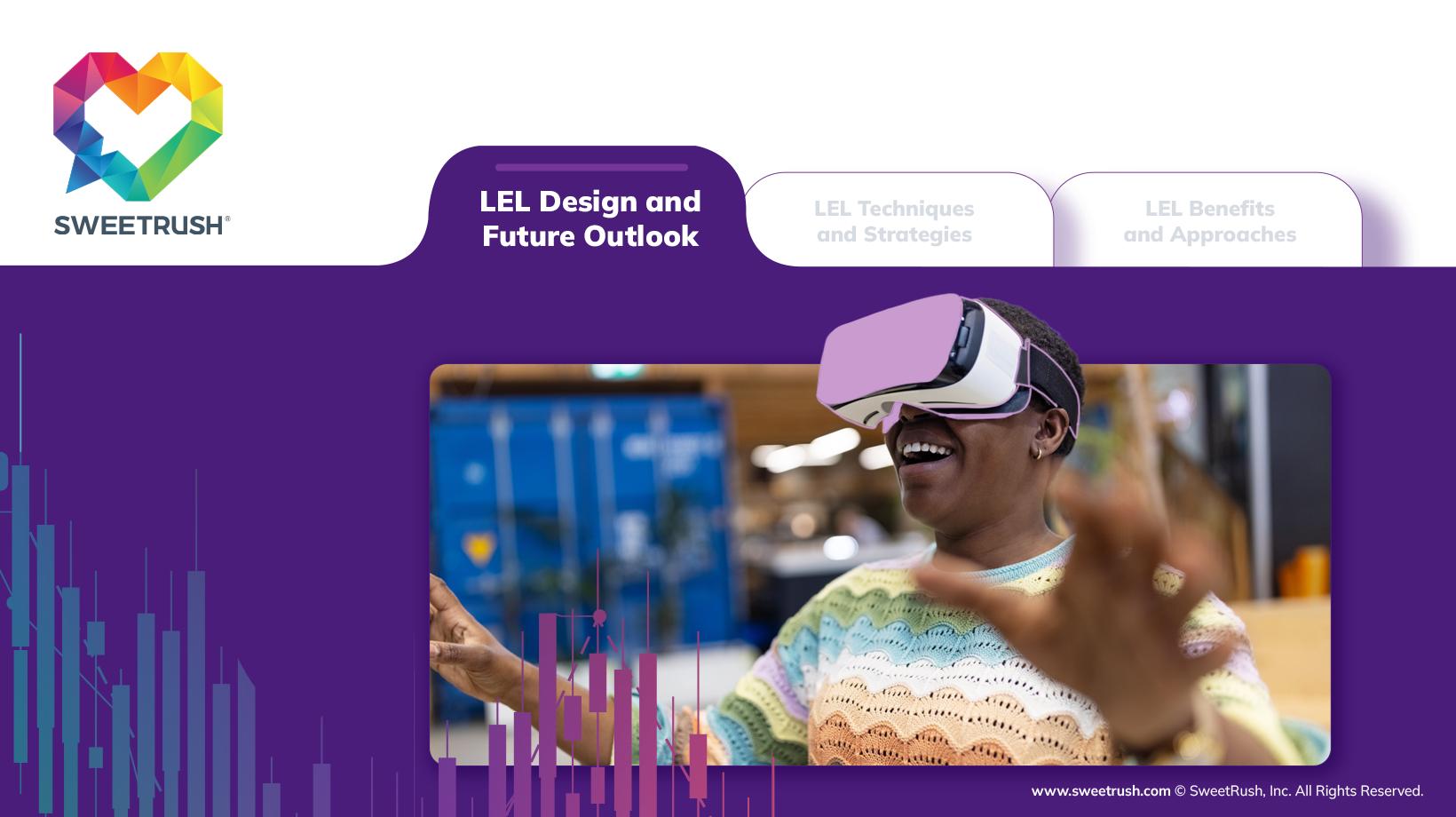We’ve touched previously on how live experiential learning (LEL) empowers us to upgrade our traditional instructor-led training (ILT) experiences to active, immersive experiences that truly benefit our learners and our organizations.
We’ve also discussed some techniques for engaging learners, opportunities to promote emotional intelligence (EI) and adaptability, and considerations for L&D leaders as they craft an LEL strategy.
In this article, we’ll delve into the considerations L&D leaders must keep in mind when designing LEL experiences and what’s on the horizon as this modernized approach to ILT continues to evolve.
Live Experiential Learning Design Considerations for L&D Leaders
LEL is an essential tool for L&D leaders, empowering them to create dynamic learning experiences that develop crucial skills and drive organizational resilience. To effectively cultivate employee talent, L&D leaders need to master the LEL format to provide meaningful experiences that enhance employees’ skill retention and adaptability. The following are strategic considerations to keep in mind:
- Shift from Passive to Active Learning
- Recognize that traditional training has limitations. LEL promotes deeper engagement and better retention.
- Embrace methodologies that involve doing, reflecting, and applying.
- Focus on Skill Development
- The following skills will serve employees in the long term and help them weather the tides of a constantly changing workplace:
- Emotional intelligence
- Adaptability and resilience
- Decision-making under pressure
- Effective communication and collaboration
- The following skills will serve employees in the long term and help them weather the tides of a constantly changing workplace:
- Measure and Evaluate Impact
- Establish clear metrics to assess the effectiveness of learning.
- Gather data on learner satisfaction, skill development, and behavioral change.
- Use evaluation results to continuously improve programs.
- Embrace Technological Advancements
- Stay informed about emerging technologies that can enhance LEL.
- Explore the use of AI for personalized feedback and data analysis.
- Utilize gamification to increase engagement and motivation.
- Create a Culture of Learning
- Foster a learning environment that encourages experimentation, risk-taking, and feedback.
- Promote a mindset of continuous improvement.
- Understanding the “Why”
- It is important for L&D leaders to understand the science behind experiential learning and how it engages the brain in ways that traditional learning does not.
- Being able to articulate the “why” will help gain buy-in from stakeholders for LEL.
LEL is a powerful learning modality that helps modern L&D leaders create engaging and impactful learning experiences that equip their workforce with the skills they need to thrive in today’s dynamic and complex world.
The Future of Live Experiential Learning
Like the future of work itself, the future of LEL is dynamic and perpetually evolving, with several key trends shaping its evolution. Below is an overview of the most significant advances:
1- Enhanced Integration of Technology
- Virtual, Augmented Reality, and Mixed (VR, AR, and MR):
- These immersive technologies are creating increasingly immediate, authentic, and realistic simulations that challenge learners to navigate complex scenarios within a safe and controlled environment.
- VR, AR, and MR can help us personalize our LELs and offer opportunities for remote participation, thus expanding access to high-value learning and skilling experiences.
- Artificial Intelligence (AI)
- AI will increasingly be used to personalize LELs, providing tailored feedback and adaptive learning paths.
- AI-powered analytics will help L&D leaders track learner progress and identify areas for improvement, allowing for more data-driven program design.
- Gamification
- Game-based elements will increasingly be incorporated into LELs to increase learner engagement and motivation.
- By making learning more interactive and enjoyable, gamification will help us drive skill retention and application.
2- Increased Focus on Personalized Learning
- Learning is becoming more tailored to individual learner needs and preferences.
- Adaptive learning platforms and AI-powered tools are enabling personalized learning paths.
- This shift ensures that learners continue to receive the most relevant and effective learning for their needs and roles.
3-Emphasis on Social and Emotional Learning (SEL)
- There is a growing recognition of the importance of SEL in employee development.
- Experiential learning programs are increasingly incorporating activities that develop emotional intelligence, empathy, and social skills.
- This focus prepares learners to navigate complex interpersonal dynamics and collaborate well with diverse, high-performing teams.
4-Greater Emphasis on Measuring Impact
- Organizations are increasingly demanding measurable results from their learning programs.
- Advanced analytics and data-driven approaches help L&D leaders track learner progress and assess the impact of experiential learning.
- This focus on measurement ensures that learning programs are delivering a strong, demonstrable return on investment.
In conclusion, live experiential learning (LEL) offers a transformative approach to skills development, moving beyond traditional instructor-led training methods to create impactful and lasting change.
By embracing techniques that foster active participation, real-world application, and continuous feedback, organizations can cultivate employees who are not only knowledgeable but also agile, empathetic, and equipped to navigate the complexities of today’s business landscape.
The investment in well-designed LEL programs yields significant returns, empowering L&D leaders to drive innovation, build strong teams, and achieve organizational success. As the future of L&D and talent management continues to evolve, LEL will be a powerful tool for fostering growth and ensuring that our people are prepared to meet the challenges and opportunities ahead.
Looking for more on how LEL can help you transform your approach to skills development, productivity, and future-readiness? Check out these related articles in our LEL series:




